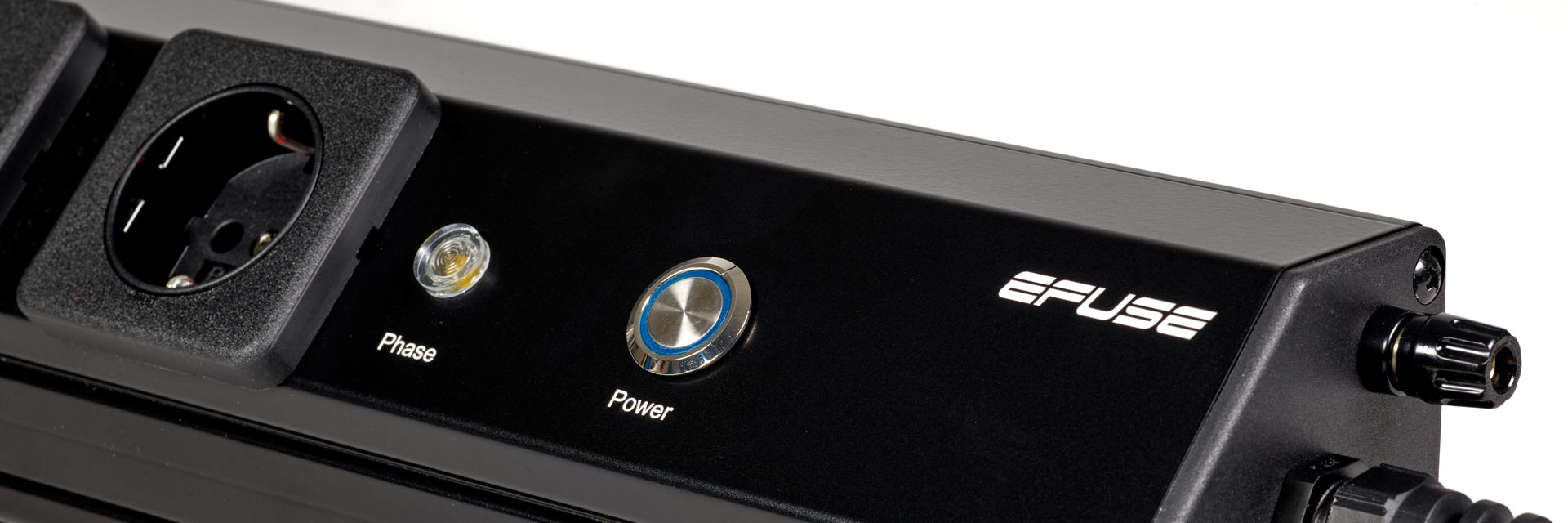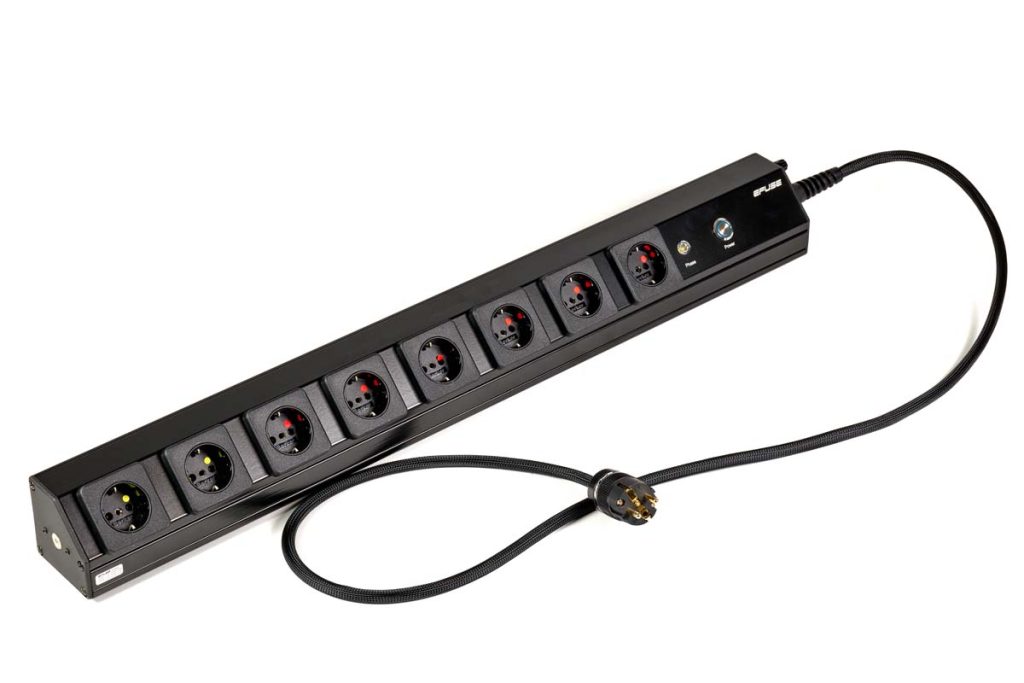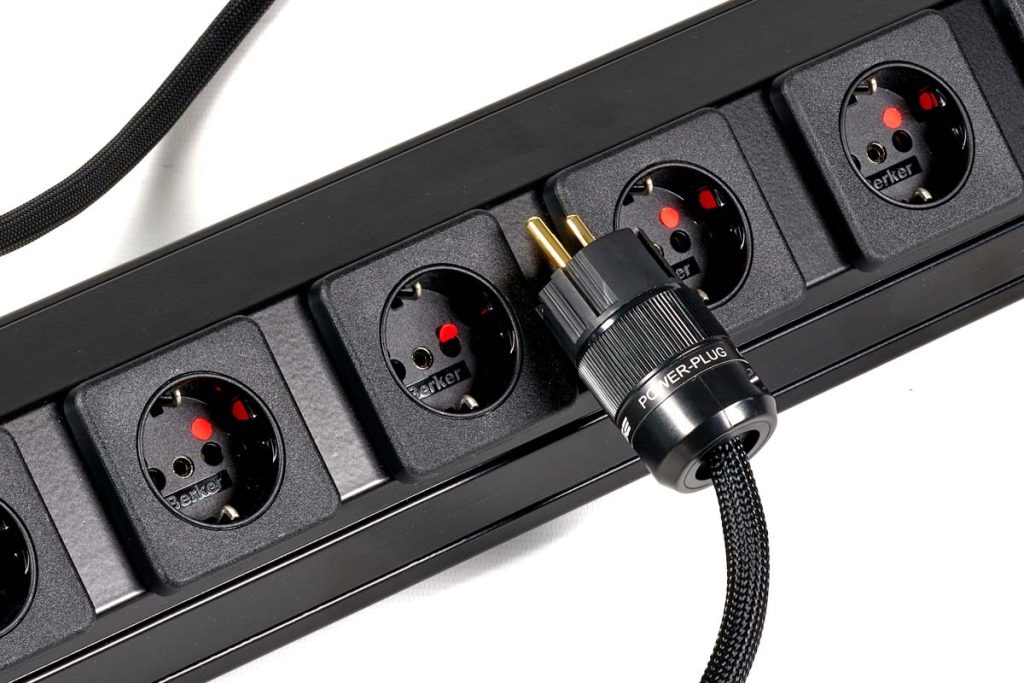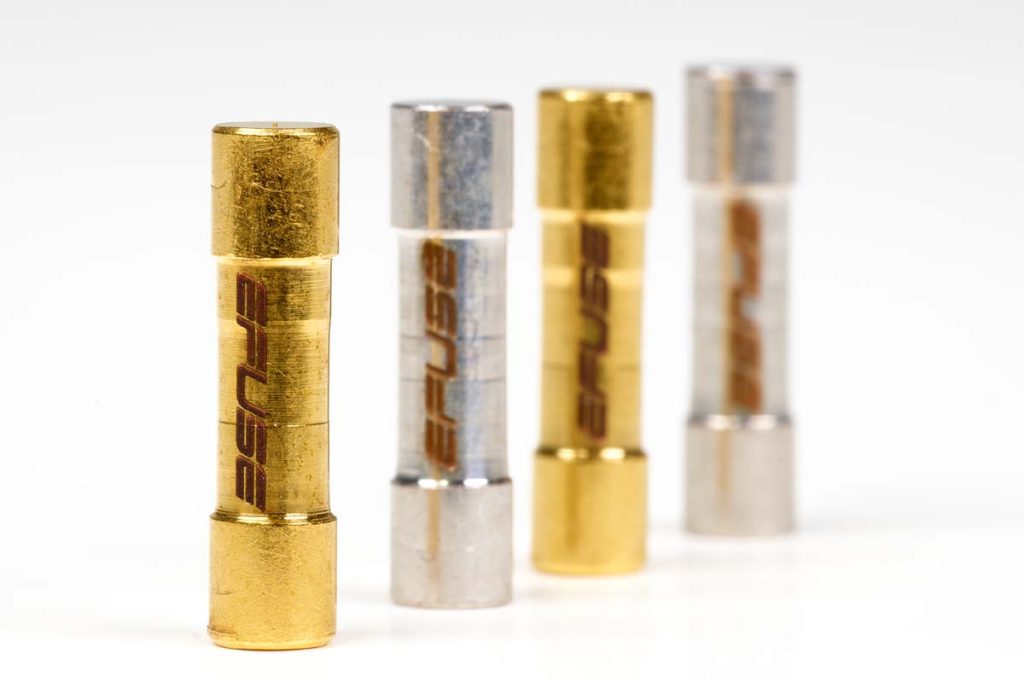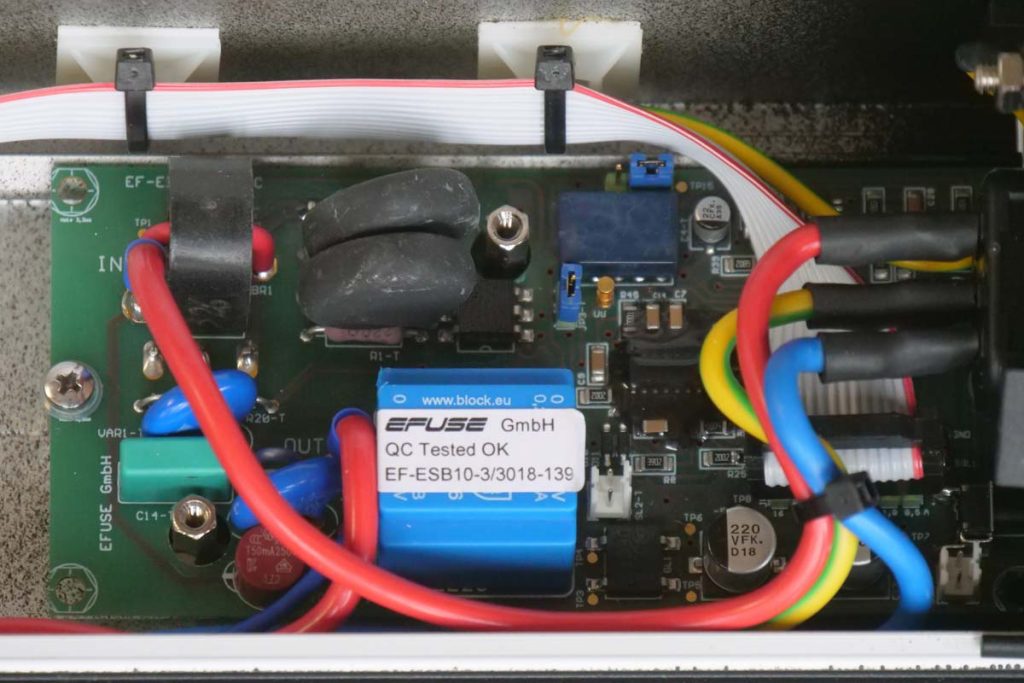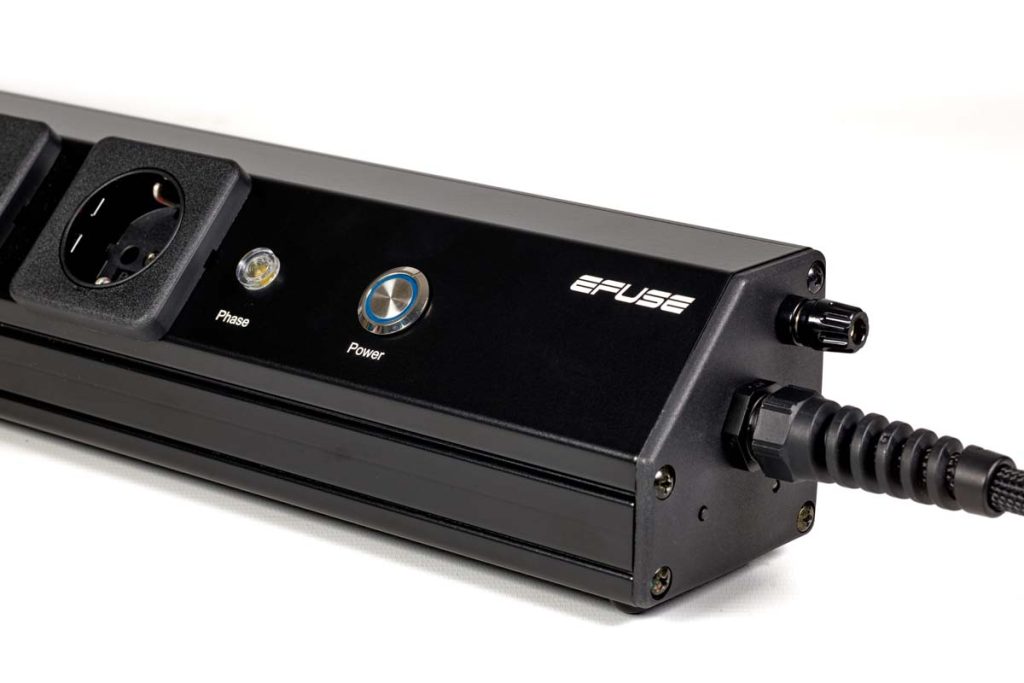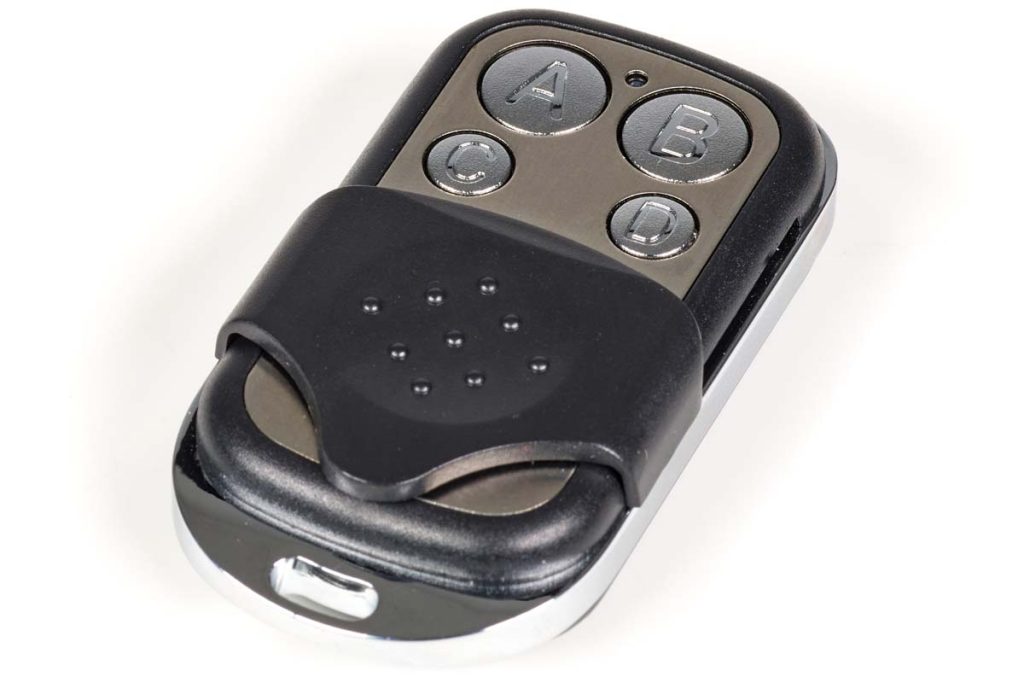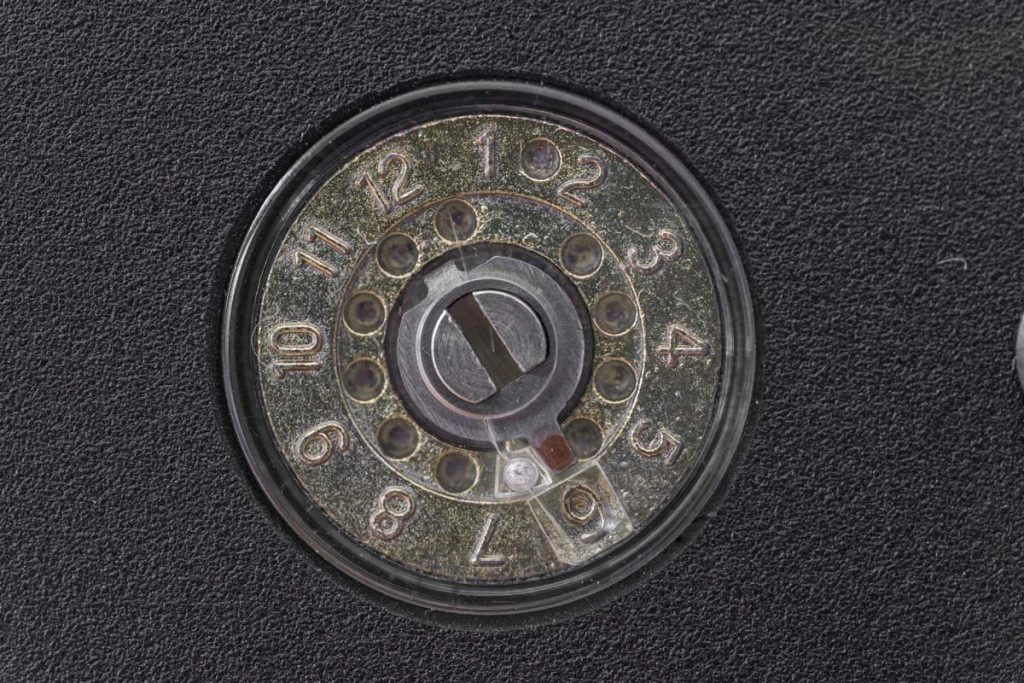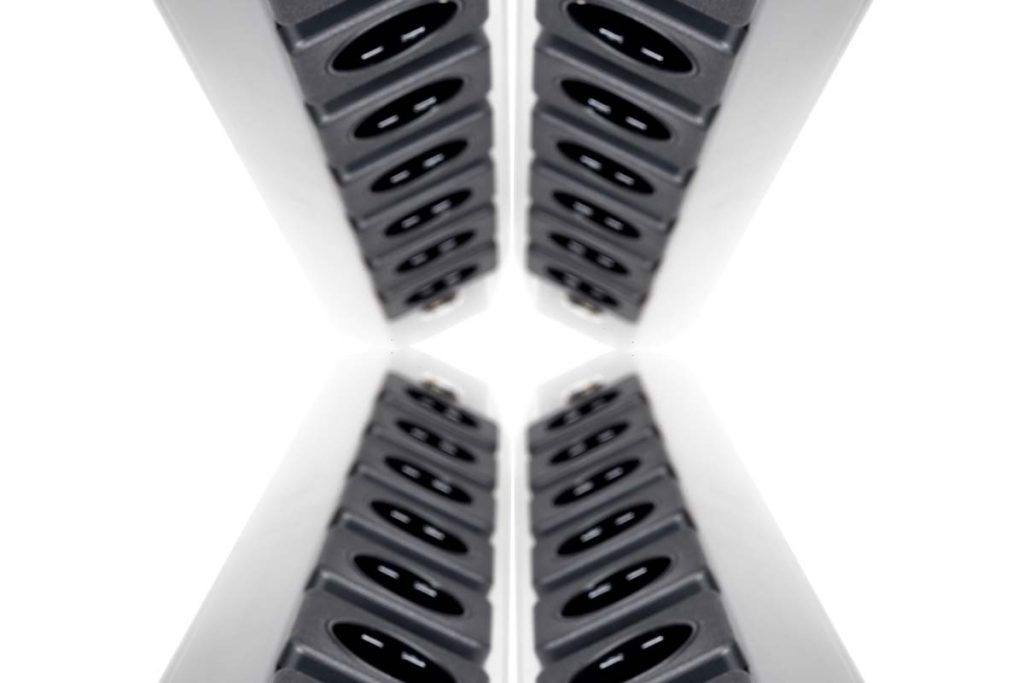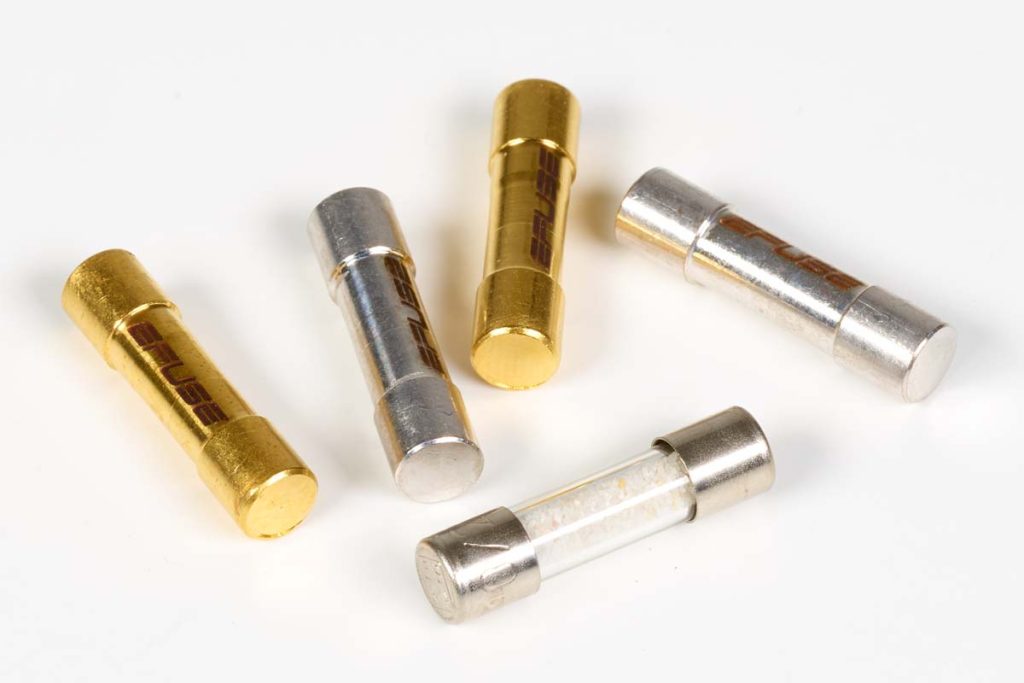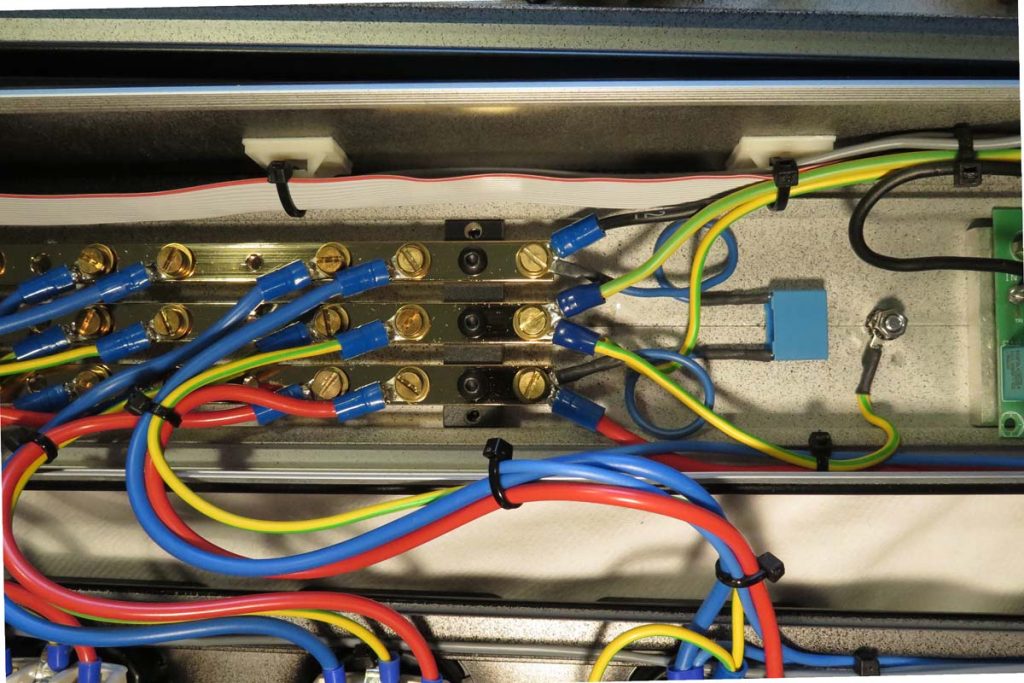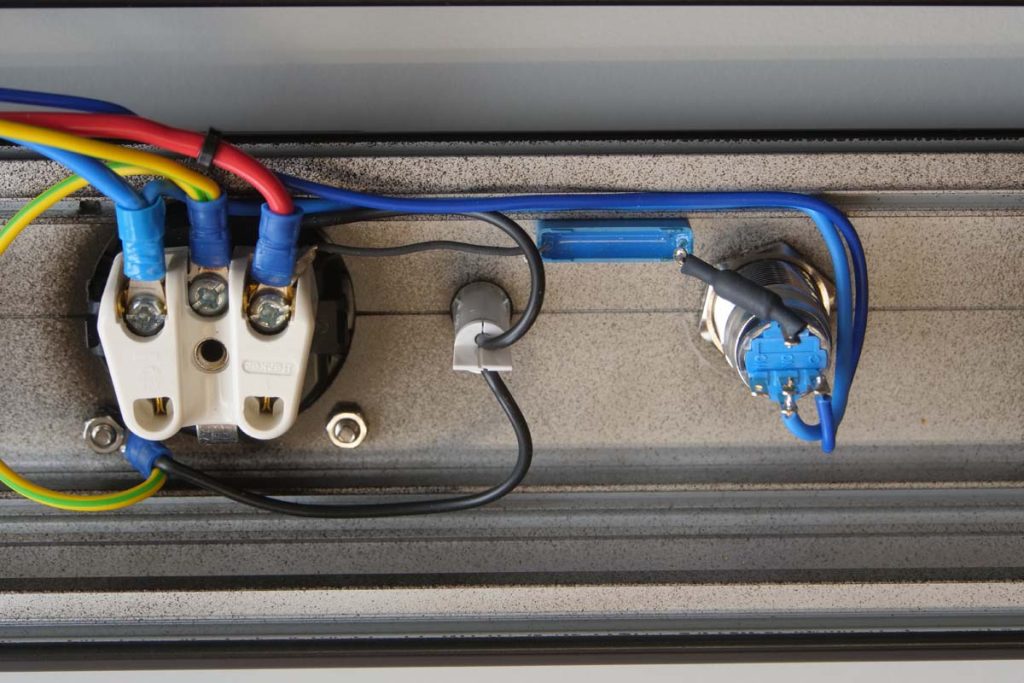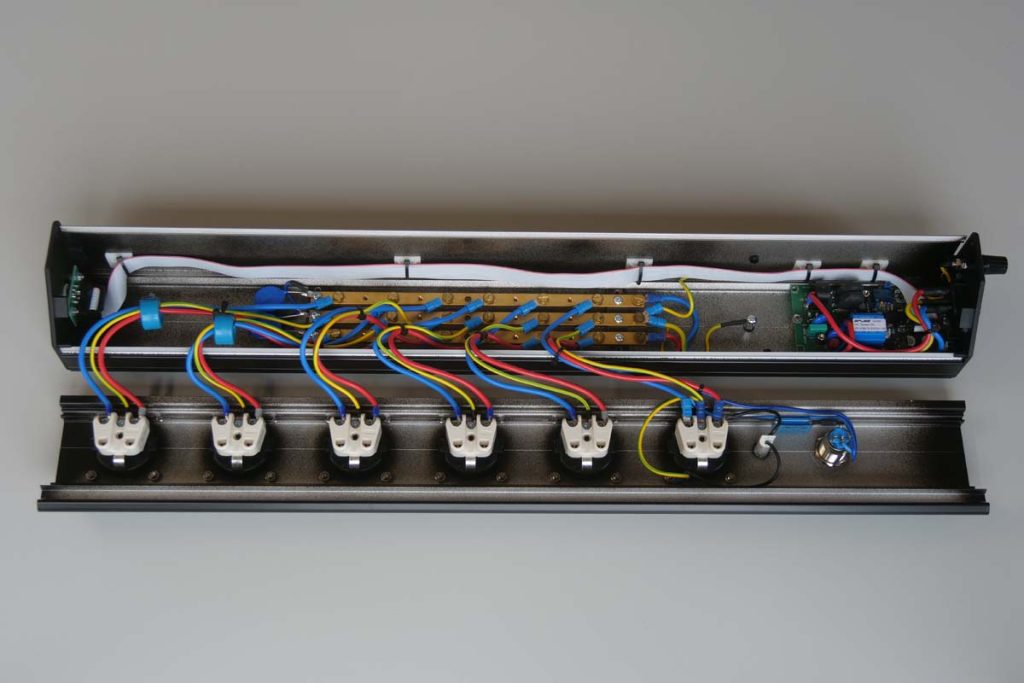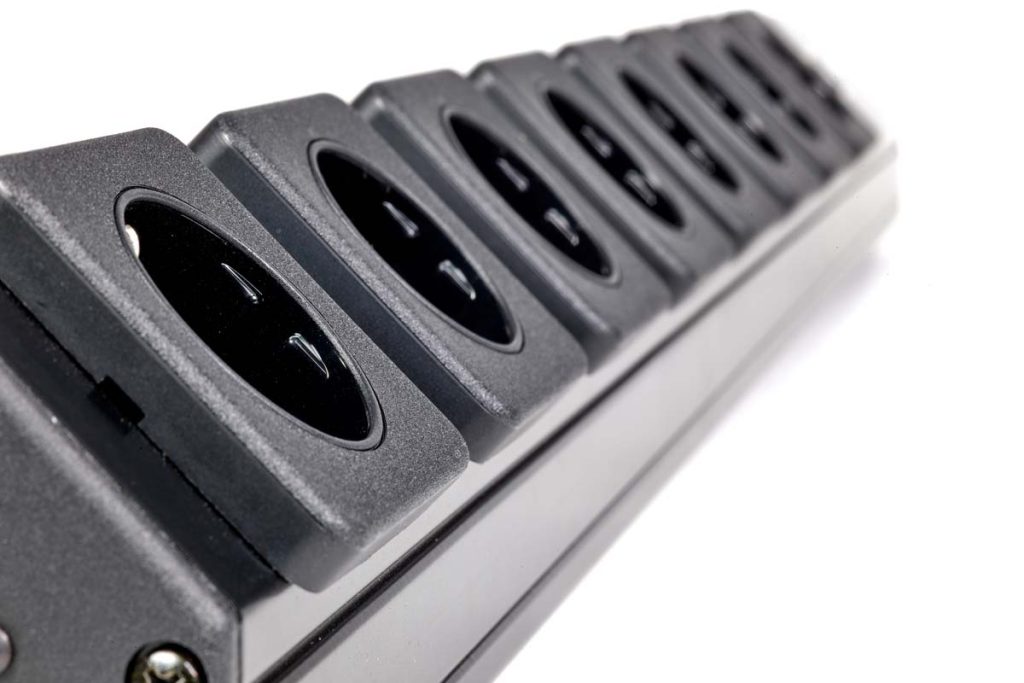Organizational blindness tempts us to apply the same tricks over and over again and add old familiar helpers to get the unruly HiFi system up to speed. But it can also work the other way around: you just have to take something away in the right place.
Cross your heart and hope to die: How much money have you invested in wiring? Three, four, five figures? Or are you one of those adrenaline-addicted daredevils who keep it with the standard cables? In any case, there are small fortunes attached to the chains here at the publishing house or at our authors’ houses, and it’s better to keep quiet about them in the presence of their respective partners. All the greater is the irony that, just behind the power sockets of our components, we squeeze the ultimate basis of all signals, the current, through predetermined breaking points – the fuses. Ok, ok … suuure: as a conscientious audiophile, you have replaced the hair-thin wires with higher quality hair-thin wires with silver or gold plated caps. Perhaps even with models featuring resonance damping, i.e. sand or some other kind of filling. But the fact remains: the better solution would be to bypass the little glass tube altogether.
This radical step was not even on the minds of the two hi-fi friends Wolfgang Rixen and Fred Bühler when they arranged to meet for one of their traditional listening evenings sometime in 2013. The seasoned engineers and physicists, respectively, had curiously ordered a handful of hi-fi fuses and wanted to get to the bottom of the matter. The differences were quite audible, Fred Bühler recalls in our conversation, but they quickly came to the conclusion that the results fell short of expectations. They discussed the matter for a while and, on a whim, began to tinker with a first rough prototype of the circuit they now call EFUSE. It took barely fifteen minutes before the first fuse flew out of its housing, and the effect … was resounding.
I still remember well my first contact with the electrical fuse. It was in 2018. Wolfgang Rixen and Fred Bühler attended the event as guests, while Holger Fromme of Avantgarde Acoustic announced that from now on he would deliver the active models of his Hornmanufaktur exclusively with the new fuse variant. By the way, this has not changed until today. For us, the little black box caused some uncertainty, as we were not sure whether and under what circumstances one can or may remove the fuse from a device. “A common misunderstanding,” Fred Bühler clarifies for me. In fact, he says, strictly speaking, only the main fuse (FI) is mandatory. The smaller ones in the devices are used, well, because that’s the way it’s always been done and because it can’t do any harm if things go from bad to worse. And exactly here would lie another misunderstanding: EFUSE does not remove the fuse, but replaces it with an alternative concept that simply makes much more sense sonically.
The core product of the two men from Solingen is a circuit that monitors the current flow and if necessary – should anything go wrong – disconnects the supply to the connected device. The necessary components fit comfortably on a palm-sized circuit board, which EFUSE installs in several “current suppliers” in different variants. Bühler can list the advantages of the technology as if shot from a pistol: The fuse of the connected component becomes obsolete. As a replacement, the manufacturer packs a few pins in the shape and size of an ordinary fuse (5 x 20 mm). The pins are inserted into the fuse clamp. They are available in various designs: pure, rhodium-plated or gold-plated copper, for example. The physicist explains that he cannot say which is better or worse. It all depends on the system. Something else, however, is certain: Where the predetermined breaking point was before, the most solid part of the power supply is located after the change.
In addition, the circuit is faster and thus safer than a conventional fuse. Since a short voltage peak far above the regular operating point occurs when devices are switched on, the glass bulbs have an appropriate tolerance. Especially in the “high-fidelity” versions, thicker wires are often used for better current flow. It can take up to 50 seconds before the glass bulb reacts and burns out. And that brings us to aspect number three: Nothing burns on the EFUSE! If an error is detected, the circuit disconnects the component(s) from the power supply via a relay, and a red LED lights up on the casing. Pressing the reset button, which can be found on every variant of the EFUSE, closes the circuit again, and the LED returns to its regular green. The most important point, however, and here high-enders may well listen up, is that the protection circuit is not in the signal path. The EFUSE works in parallel. As long as the protection circuit is inactive, there is no component in the current flow except for said relay.
The Solingen-based company manufactures its products itself. Only the circuit board is printed and supplied externally. Everything else, from assembly to housing installation, is done in the factory. This creates room for any special requests. As Fred Bühler explains to me, he recently tailored a version for extremely high voltages. In order to compensate for the higher temperatures involved, he extended the circuit board and was thus able to use the enclosure of the fuse as a radiator. Sometimes, he says, the EFUSE also needs to be adapted to “special environmental variables.” An integrated inrush current limiter ensures that power-hungry devices such as power amplifiers are gently driven into continuous operation.
This control circuit sometimes does not get along with similar devices, as can be found in some power filters. In such a case, EFUSE gives in and deactivates the limiter – a reversible process.
Fred Bühler and team made an eight-socket Powerbar for us so we could try out the magical fuse at our leisure. This is a power distributor with – logically – a total of eight cold device connections. For connection to the wall, you can order the powerbar (as we did) with a 1.5-meter cable, or you can order it for a lead of your own choice with an IEC plug connection. The actual EFUSE sits directly behind the power access at the right end of the bar, and an illuminated button ensures that you can disconnect the entire system from the power.
Since the bar behind the system is not always easy to reach, the developers also thought of a handy remote control, which you can order optionally (around 265 euros).
We opted for the distributor version because the power bar illustrates yet another advantage of the EFUSE: Since the fuse can handle power up to six amps, you only need one for normal chains. Precisely for this reason, in order to be able to “de-fuse” the complete chain in one wash, sufficient rhodium-plated copper pins are included in the scope of delivery. For an optimal adjustment of the bar, a small intervention is required afterwards: The EFUSE does not know, of course, how current-hungry the downstream devices are. One can set the desired ampere threshold with a small screwdriver (included) via a recessed regulator.
If you have all the instructions at hand, you simply add up the power consumption of the devices. Or you can feel your way around like we did. The power bar is set to its maximum value of six amps in the delivery state. You can gradually reduce the power by one amp until the fuse blows. Then you should regulate one amp up again and you’ve reached your goal. The answer in the FIDELITY listening room was four amps. If your system requires more than six amps, EFUSE can custom-make more powerful models, as mentioned earlier.
The distribution strip is not only smartly designed and haptically excellently implemented, it also proved to be a grateful (i.e. time-saving) test candidate in our listening room: In the actual sound check, it barely took ten minutes before our central questions were answered. With the combination of Aavik’s integrated amplifier I-580, the streamer S-580 and the DAC D-580, we had ideal playing partners at hand. The three Danes have externally accessible fuse carriers directly above the power inputs. After barely a minute, we had sunk three of the rhodium-plated pins into the components and could press the play button. The first thing we listened to was “Roxanne” from the cover album Police in Dub. The recording begins with an atmospheric street shot: traffic, honking horns, passersby walking, distant and closer conversations from all directions. With the EFUSE, no, without backup, the performance suddenly seemed noticeably tidier. The localization of the individual acoustic elements appeared sharpened and better outlined. Shortly thereafter, the music kicked in. Despite its almost exaggeratedly “boomy” foundation, the cool bass played a subtle touch blacker and cleaner.
For the comparison, we rebuilt the system back to its original state. In fact, the chain seemed a small but painful nuance more contourless and less responsive after that. And anyone who knows the Danish 500 knows at what level the system already makes music in “normal condition”. Of course, we repeated the game with the EFUSE several times, among others with Aavik’s battleship I-880 or T+A’s powerful M-200 power amplifiers, which, by the way, are not that easy to open. The result was always the same and, mind you, anything but subtle: the distribution strip brings the imaging sharpness to the point and adds a fine extra musicality. And it comes at a price-this is especially true for the EFUSE-only-that’s defensible.
Accompanying Equipment
CD player: Audio Note CD 3. 1x/II, Ayon CD-3sx | Network Player/DAC: Aavik S-580 and D-580, Lumin X-1, Audiodata MusikServer MS II | Integrated Amplifiers: Aavik I-580, Aavik I-880, Trigon Exxceed | Preamplifier: Luxman CL-1000, T+A DAC 200 | Power amplifier: Luxman M-10x, T+A M 200 | Loudspeakers: Wilson Audio Sasha DAW, Børresen Z5 Cryo, DALI Epicon 6 | Rack: Finite Elemente, Solidsteel
Power distributor
EFUSE Powerbar Cable
Concept: 8-way distributor with electronic fuse circuit, replaces the conventional glass fuse | Response accuracy: < ±10 % | Response time (slow): 100-200 ms | Forward resistance: < 15 mΩ | Switching thresholds (Amps): 1, 2, 3, 4, 5, 6 | Output plug: protective contact socket (Schuko) | Connection cable: 1.5 m | Status display: LED green/red | Special features: Central switch (remote controllable), remote control optional (around 265 €), reset button | Weight: 3 kg | Dimensions (W/H/D): 80/8/8 cm | Warranty period: 2 years | Price: around 2900 €
EFUSE
Grünewalder Straße 29-31
42657 Solingen
Phone +49 212 2494955
info@efuse.de

